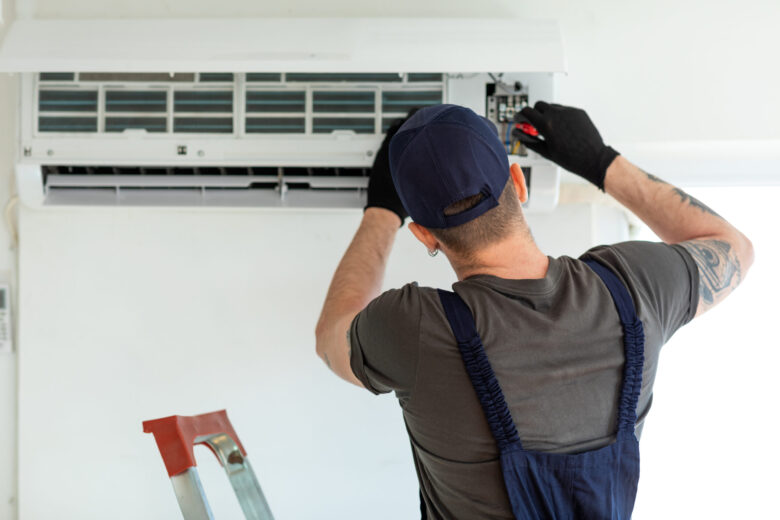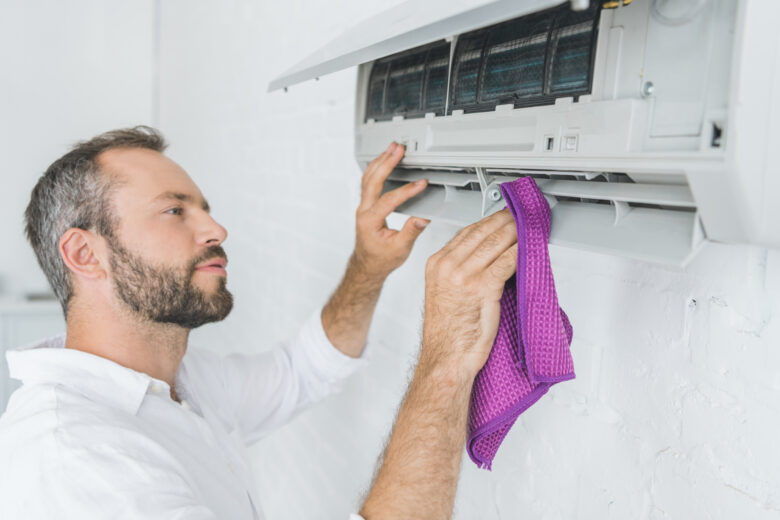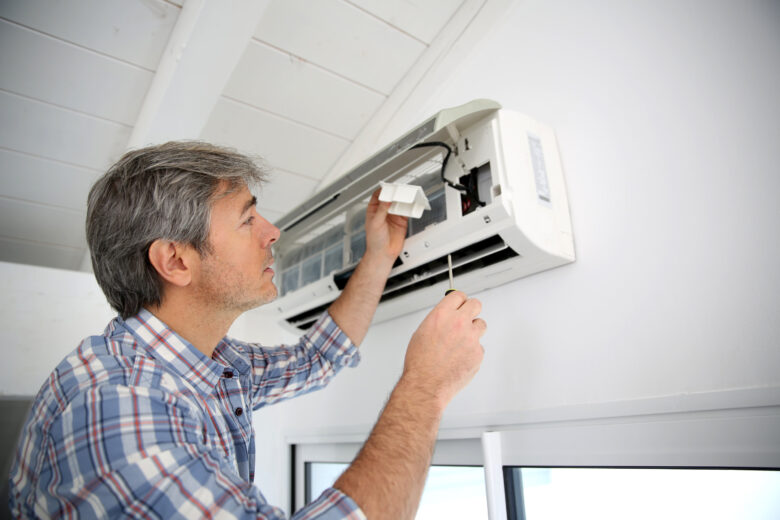Your air conditioner is a reliable companion, offering you relief and cooling when the sweltering summer heat arrives. To maximize efficiency and longevity, your system must be maintained regularly. Maintaining a regular maintenance schedule can prevent malfunctions, increase energy efficiency, and ensure that the air in your home is clean and healthy.
A well-kept air conditioner has long-lasting benefits and provides effective cooling, such as filter changes and fin checks. In this article, we’ll walk you through a step-by-step process for maintaining your air conditioning system.
The Fundamentals of Air Conditioning

Before we begin the maintenance procedure, let us first become acquainted with the fundamental concepts of an air conditioner. An air conditioner collects heat and moisture from the ambient air in your home and sends it outside. This complex process necessitates using filters, coils, fins, refrigerant, and a compressor.
Filters
Filters are essential for any air conditioning system, carefully collecting dust, dirt, allergens, and other tiny particles, encouraging a clean and healthy atmosphere. Filters that are clogged not only affect indoor air quality but also obstruct airflow, resulting in decreased system efficiency. As a result, frequently cleaning or replacing the filters is required depending on the type of filter used by your device.
Coils
The two types of coils utilized in air conditioning systems are evaporator coils and condenser coils. The evaporator coil takes heat from the indoor air and releases it outdoors via the condenser coil. These coils tend to acquire dirt over time, affecting their effectiveness. Cleaning the coils once a year extends their life and reduces energy waste.
Fins
Heat transfer is aided by the fins that enhance an air conditioner’s evaporator and evaporator coils. However, the flow may be constrained, and heat transmission may be hampered by bent or broken fins. The cooling efficiency and airflow can be improved by carefully straightening the fins with a fin comb.
Maintenance Checklist for Air Conditioning

Now that we’ve covered the fundamentals let’s review a comprehensive air conditioning maintenance checklist.
Cleaning and Replacement of Filters
Clear filters are essential to maximizing indoor air quality and unit efficiency, as was already mentioned. To find out what filters are being used, read the manual on your unit. Finally, clean or replace the filters as directed by the manufacturer. Reinstalling reusable filters involves carefully cleaning them with water and allowing the air to dry. Disposable filters, on the other hand, should be replaced according to the manufacturer’s directions.
Washing Of Coils
Turn off the device to start the coil cleaning operation. Remove any debris or plants from the region around the compressor device. To thoroughly remove dust and grime from the coil areas, use a soft clean or a vacuum cleaner with a brush attachment. You have to be cautious not to damage the delicate fins. Use a coil cleansing solution as indicated by the manufacturer if the coils are strongly dirty.
Cleaning Of The Fins
Examine the evaporator and condenser coil fins carefully for any twisting or damage. To restore correct flow, carefully stretch the fins with a fin comb, which is easy to find at most electronics stores. When combing the fins, take care not to use too much stress. Stretch all of the fins across the wire systematically.
Cleaning Condenser Unit Dust
Over time, the condenser unit, usually located outside, might accumulate leaves, grass, and other debris. This buildup obstructs airflow and lowers the efficiency of the device. Regularly inspect the condenser and clean any residue away with a brush or a gentle spray of water.
Inspecting and Cleaning the Condensate Drain

Air conditioners generate condensate as part of the cooling process, which must be adequately drained. Examine the condensate drain to verify it is not clogged or obstructed. A blocked drain can lead to water leaks and significant damage to your apartment and the surrounding neighborhood. Use a bleach-water combination or a specially prepared condensate drain cleaner to remove any blocks.
Examine Electrical Connections
Before checking the electrical connections, turn off the electricity to the air conditioning equipment. Examine the connections for any loose or rusted connections and tighten or clean them as needed. Faulty electrical connections can cause system failures which may indicate hazards.
Lubrication Of Moving Parts
Some conditioner units have motors, fans, and other moving elements that require oil to function correctly. Use the prescribed lubricant and check your unit’s handbook to determine the exact sections that require lubrication. Over-lubrication may be as damaging as under-lubrication, so use caution while applying it.
Examining the Thermostat
Check that the thermostat works properly and appropriately, reflecting the intended temperature. Adjust or replace the thermostat as needed to ensure maximum comfort and energy efficiency.
Checking The Coolant Levels

The cooling process requires proper coolant levels. Low coolant levels may signal a system leak that needs expert intervention. If you suspect a coolant leak, make an appointment with a certified HVAC expert to assess and correct the problem.
Expert Maintenance Schedules
While homeowners may undertake many maintenance activities, professional maintenance should be scheduled at least once a year. HVAC professionals have the knowledge and tools needed to completely examine and maintain your air conditioner, assuring its optimal efficiency and lifespan.
Conclusion
Proper maintenance is essential to ensure your air conditioning unit’s best performance and lifetime. By following the instructions given in this article, you can keep your air conditioner in good working order and enjoy a comfortable interior atmosphere all year long. Always remember to clean or replace the filters on a regular basis, as well as clean the coils, straighten bent fins, clear debris from the condenser unit, test electrical connections, lubricate moving components, verify refrigerant levels, and arrange expert repair as needed.
By maintaining your air conditioner, you are not only increasing its efficiency and longevity but also encouraging improved indoor air quality and saving money on energy bills. Make air conditioning maintenance a top priority, and you’ll enjoy the benefits of a cool, relaxing house.

